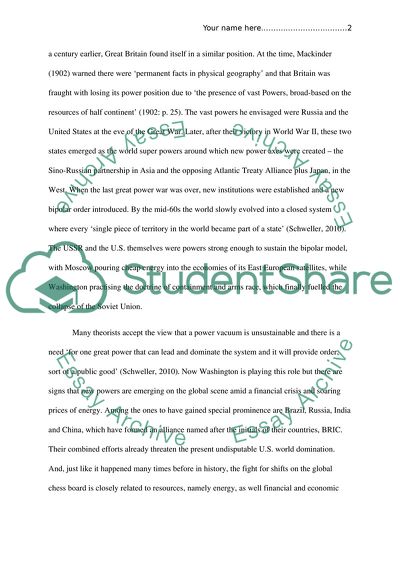Cite this document
(Global Shifts and Fault Lines: What is Happening to the Global System Research Paper, n.d.)
Global Shifts and Fault Lines: What is Happening to the Global System Research Paper. Retrieved from https://studentshare.org/macro-microeconomics/1735294-do-you-think-that-the-talk-in-recent-years-of-the-rise-of-the-bric-countries-brazil-russia-india-china-and-perhaps-also-of-other-countries-such-as-south-korea-mexico-or-south-africa-is-just-superficial-journalism-or-that-it-reflects-a-real
Global Shifts and Fault Lines: What is Happening to the Global System Research Paper. Retrieved from https://studentshare.org/macro-microeconomics/1735294-do-you-think-that-the-talk-in-recent-years-of-the-rise-of-the-bric-countries-brazil-russia-india-china-and-perhaps-also-of-other-countries-such-as-south-korea-mexico-or-south-africa-is-just-superficial-journalism-or-that-it-reflects-a-real
(Global Shifts and Fault Lines: What Is Happening to the Global System Research Paper)
Global Shifts and Fault Lines: What Is Happening to the Global System Research Paper. https://studentshare.org/macro-microeconomics/1735294-do-you-think-that-the-talk-in-recent-years-of-the-rise-of-the-bric-countries-brazil-russia-india-china-and-perhaps-also-of-other-countries-such-as-south-korea-mexico-or-south-africa-is-just-superficial-journalism-or-that-it-reflects-a-real.
Global Shifts and Fault Lines: What Is Happening to the Global System Research Paper. https://studentshare.org/macro-microeconomics/1735294-do-you-think-that-the-talk-in-recent-years-of-the-rise-of-the-bric-countries-brazil-russia-india-china-and-perhaps-also-of-other-countries-such-as-south-korea-mexico-or-south-africa-is-just-superficial-journalism-or-that-it-reflects-a-real.
“Global Shifts and Fault Lines: What Is Happening to the Global System Research Paper”, n.d. https://studentshare.org/macro-microeconomics/1735294-do-you-think-that-the-talk-in-recent-years-of-the-rise-of-the-bric-countries-brazil-russia-india-china-and-perhaps-also-of-other-countries-such-as-south-korea-mexico-or-south-africa-is-just-superficial-journalism-or-that-it-reflects-a-real.


